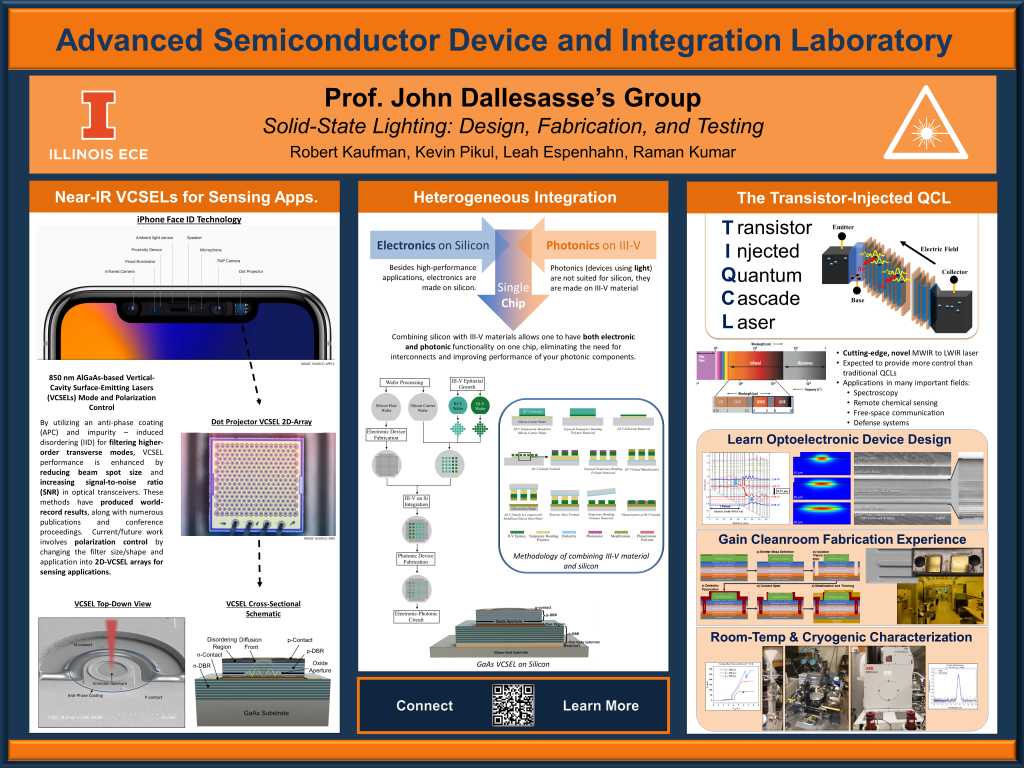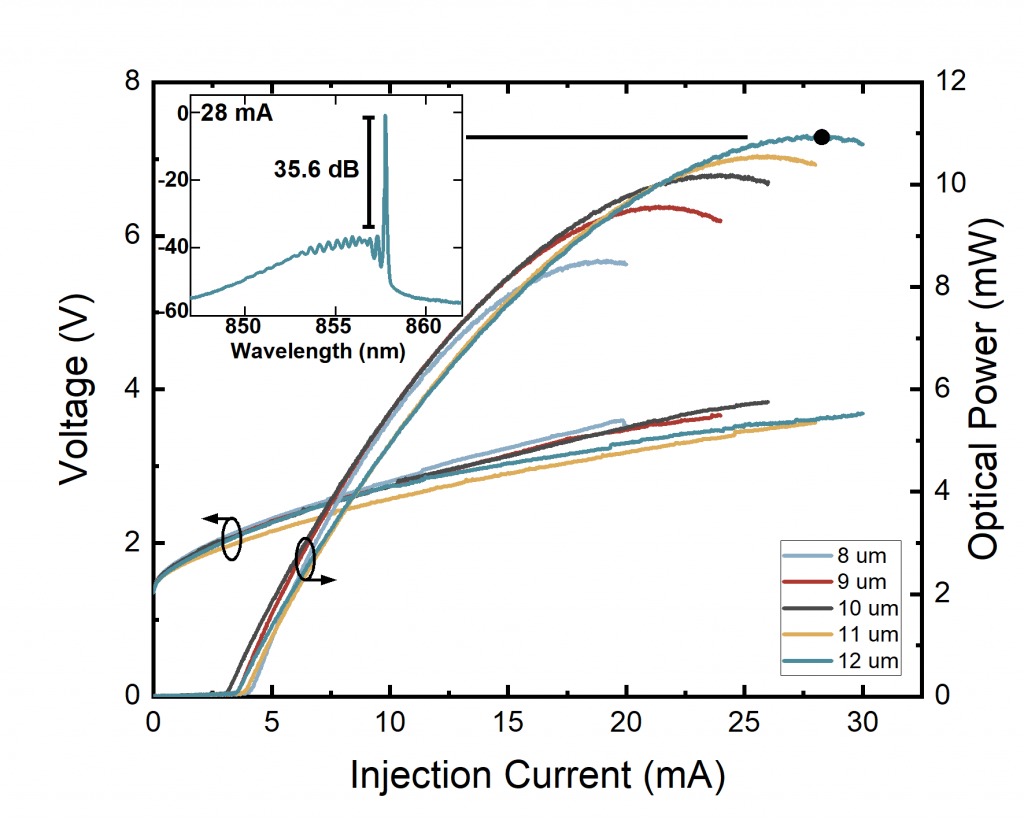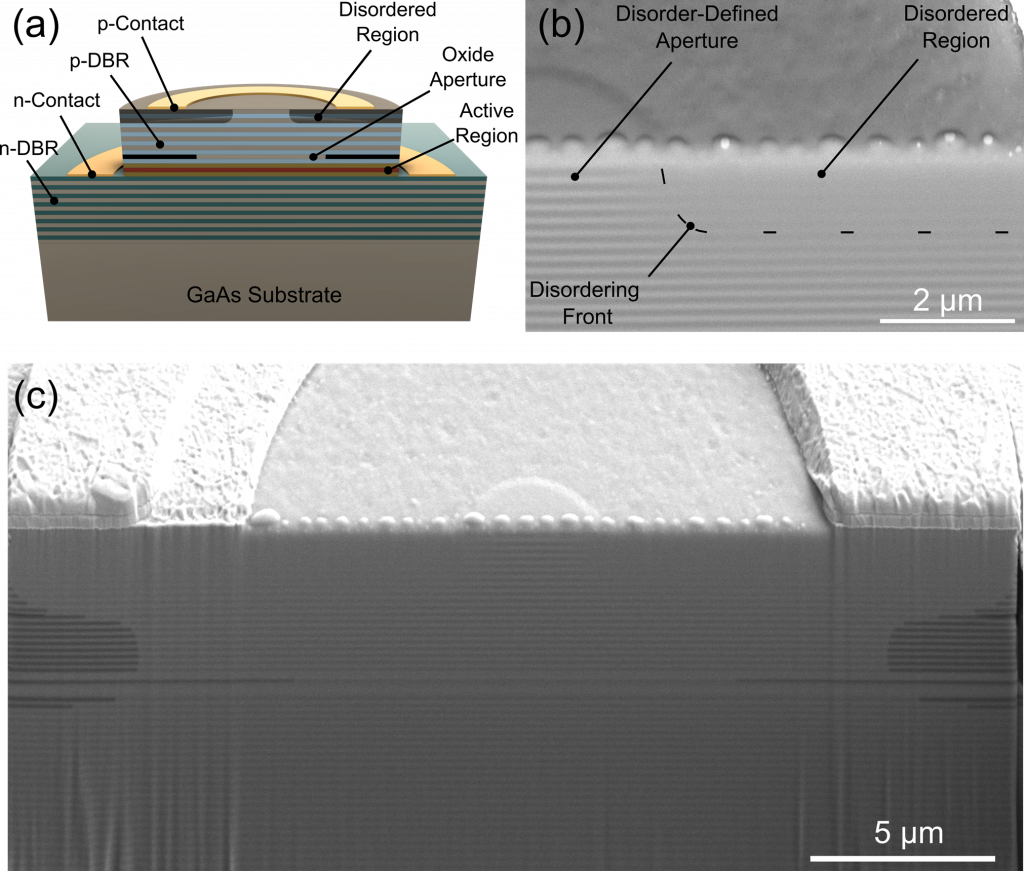At the 2023 CS MANTECH conference, Kevin presents his work on using anti-phase coatings to achieve high-power, single-mode performance in VCSELs.
Category: Mode + Polarization Control
Optical Transverse-Mode Control and Polarization Control in VCSELs
Robert, Kevin, and Leah Present at the Engineering Research Fair
Achieving high-power single-mode operation in vertical-cavity surface-emitting lasers via scalable, higher-order mode suppression techniques
Achieving high-power single-mode operation in Vertical-Cavity Surface-Emitting Lasers (VCSELs) has received renewed interest due to performance needs driven by facial recognition and 3D imaging in mobile telephones. Two distinct mode control methods that rely on exploiting the spatial field distribution of optical transverse modes to achieve high-power single-mode operation in VCSELs will be discussed. The first method uses a surface-deposited optical coating of multilayer SiO2/TiO2 or single-layer silicon to achieve single-mode emission. The capability to pattern these layers in a wafer-scale process makes this method attractive for high-volume manufacturing. The second method utilizes impurity-induced layer disordering (IID) to selectively intermix the top distributed Bragg reflector (DBR) in a VCSEL, thereby creating a mirror whose reflectivity spatially varies across the aperture. Using these techniques, single-mode output power in excess of 10 mW has been demonstrated with side-mode suppression ratios in excess of 35 db.
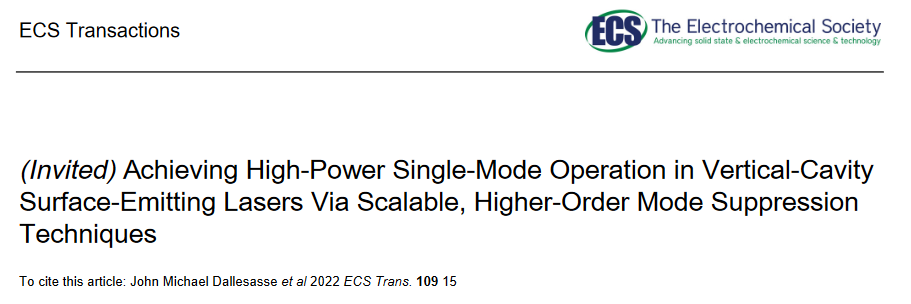
Impact of Diffusion Profile on the Modulation Response of Single-Mode Disorder-Defined VCSELs
The impact of diffusion profile shaping through the use of tensilely and compressively strained diffusion masks on the modulation response of single-mode vertical-cavity surface-emitting lasers (VCSELs) using disorder-defined apertures is investigated. VCSELs designed for high-power single-fundamental-mode emission through the use apertures defined via impurity-induced disordering (IID) in conjunction with a standard oxide-confinement process are characterized to extract high-frequency optical cavity parameters across oxide aperture and diffusion mask strain variations. The 3-dB small-signal bandwidth is maintained for a 7.68 mW single-mode 850 nm VCSEL with an oxide aperture of 13 μm using a tensilely strained diffusion mask relative to a non-disordered multimode device of the same oxide aperture. A large K-factor reduction is also observed, from 0.248 ns to 0.045 ns, indicating that damping and photon lifetimes within the cavity of VCSELs employing disorder-defined apertures are substantially reduced. Performance implications to data communication applications are discussed.
IEEE Photonics Technology Letters Article Link
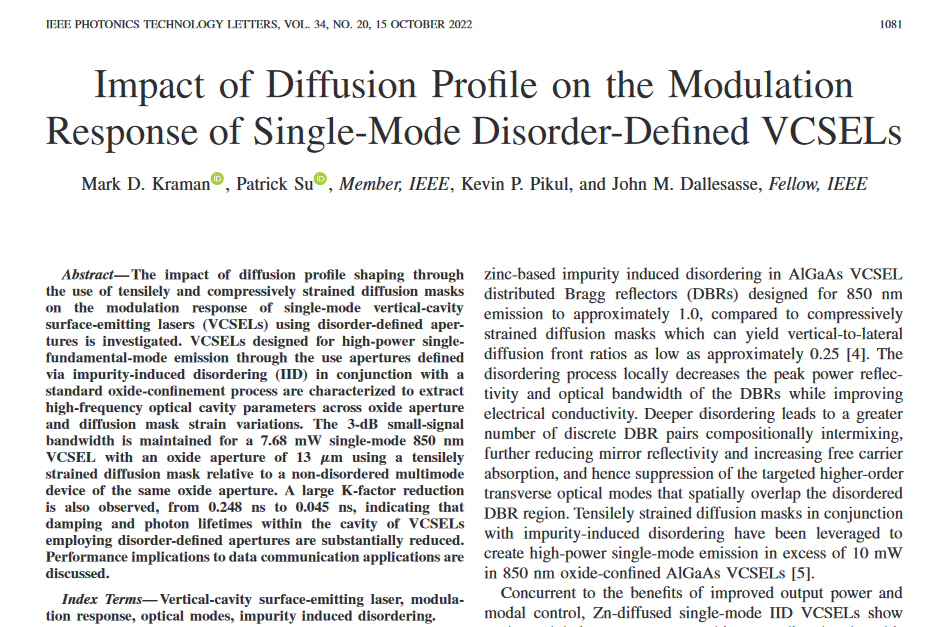
Impact of Diffusion Mask Strain on Impurity-Induced Disordered VCSELs Designed for Single-Fundamental-Mode Operation
The strain of diffusion masks utilized for impurity-induced disordering is demonstrated to control the curvature of the diffusion front, and therefore disordering front, of the disordered distributed Bragg reflector (DBR) aperture. As a result, the disordered apertures formed under strain conditions varying from compressive to tensile are shown to significantly impact the electro-optical performance and spectral characteristics of impurity-induced disordered (IID) VCSELs designed for single-fundamental-mode operation. An investigation and analysis of the electro-optical performance and spectral characteristics of IID-VCSELs as a result of varying diffusion mask strain is presented.
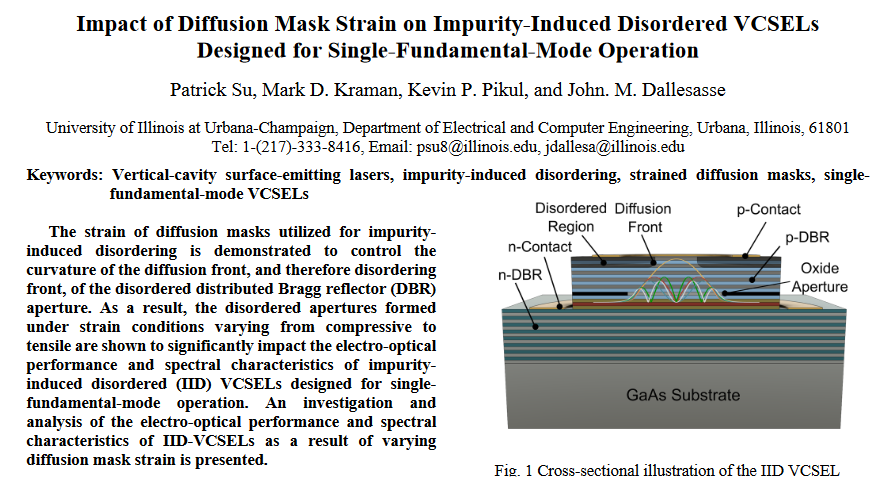
Kevin Pikul Awarded Best Student Presentation Award of CS MANTECH 2021
Kevin Pikul is awarded the best student presentation award of CS MANTECH 2021 based on his paper titled “Standing-Wave Engineering for Mode-Control in Oxide-Confined Vertical-Cavity Surface-Emitting Lasers”.


Record High-Power Single-Mode VCSELs using Strain-Controlled Impurity-Induced Disordering Apertures
Patrick Su demonstrates record high-power single-mode performance in VCSELs using strain-controlled impurity-induced disordering apertures. Oxide-VCSELs of aperture sizes from 9-13 um are shown to achieve record single-mode output powers of 8.52 mW, 9.57 mW, 10.20 mW, 10.57 mW, and 10.95 mW respectively.
Applied Physics Letter Article Link
Standing Wave Engineering for Mode Control in Single-Mode Oxide-Confined Vertical-Cavity Surface-Emitting Lasers
Single transverse mode operation in vertical-cavity surface-emitting lasers (VCSELs) is desired over multimode operation in a number of applications. This work presents a method of achieving single-mode operation by depositing an annulus-shaped semiconductor coating atop an 850 nm oxide-confined VCSEL to modify the standing wave of the optical field in the laser cavity. The devices are benchmarked for singlemode performance as well as optical output power via optical spectra and light-current-voltage (LIV) measurements respectively.
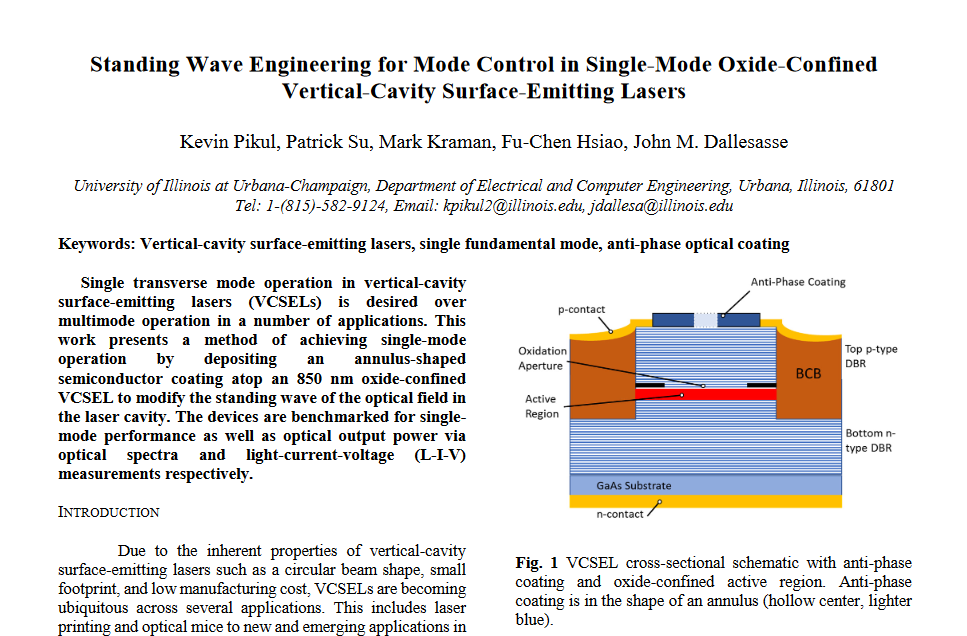
Prof. Dallesasse Interviewed About VCSEL Work
“VCSELs are a type of device that are seeing broad use in a growing number of applications,” said Dallesasse. “They are being looked at for use in self-driving cars that utilize LIDAR, and are already extensively used in the fiber optic networks of large data centers.”
“We’re specifically looking at ways of improving the optical beam that comes out of the VCSEL,” said Dallesasse. “When you have a device like a VCSEL, the optical modes can be thought of as the light patterns on the surface. In order for you to utilize patterns, it’s desirable to be able to control those light patterns.”

Patrick Su, Fu-Chen Hsiao, Tommy O’Brien, and Professor Dallesasse awarded CS MANTECH 2018 Best Student Paper Award
The Advanced Semiconductor Device and Integration Group was awarded the CS MANTECH 2018 Best Student Paper Award by Patrick Su, Fu-Chen (Alex) Hsiao, Tommy O’Brien and Professor Dallesasse on Controlling Impurity-Induced Disordering via Mask Strain for High-Performance VCSELs.
CS MANTECH 2018 Best Student Paper Award Link Here!


